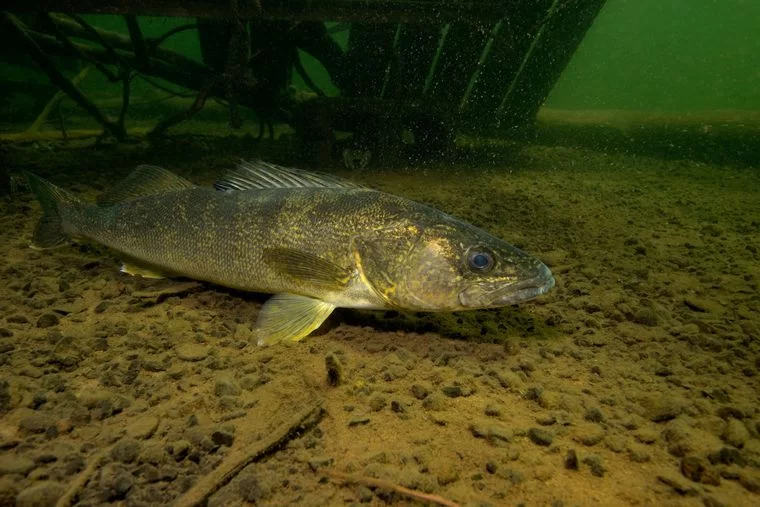
Walleye, with their elusive nature and delicious taste, are among the most sought-after freshwater game fish. Anglers from all over the world are drawn to the challenge of catching these elusive predators. In this comprehensive guide, we’ll uncover the secrets to successful walleye fishing, from understanding their behavior to mastering the best techniques and strategies.
Habitat and Behavior: Walleye are predominantly found in freshwater lakes and rivers across North America and parts of Europe. They prefer cool, deep waters with abundant cover, such as rocky points, weed beds, and submerged structures like fallen trees or brush piles. Walleye are most active during low-light conditions, particularly at dawn, dusk, and during overcast days. They have excellent low-light vision, thanks to a layer of reflective cells behind their retinas called the tapetum lucidum, which enhances their ability to see in dimly lit environments.
Dietary Preferences: Walleye are opportunistic feeders, preying on a variety of aquatic creatures, including minnows, shad, crayfish, and insect larvae. Their diet may vary depending on the availability of prey in their environment and seasonal changes. Understanding the primary forage in a walleye’s habitat can help anglers choose the most effective bait and lures for enticing bites.
Rods and Reels: When targeting walleye, opt for a medium-light to medium-action spinning or baitcasting rod paired with a reel designed for freshwater fishing. A sensitive rod tip is crucial for detecting subtle strikes, while a smooth drag system helps control the fight once a walleye is hooked.
Line and Leaders: Walleye fishing often requires light to moderate line weights, typically ranging from 6 to 10-pound monofilament or fluorocarbon line. Fluorocarbon leaders can be beneficial in clear water conditions, where walleye may be more wary of visible fishing lines.
Baits and Lures: A variety of baits and lures can be effective for catching walleye, depending on the season, water conditions, and walleye behavior. Some popular options include live bait such as minnows, leeches, and nightcrawlers, as well as artificial lures like jigs, crankbaits, soft plastics, and spinners. Experimenting with different colors, sizes, and presentations can help dial in the most productive offerings for the day.
Spring: In spring, walleye are often found in shallow, pre-spawn staging areas near rocky shorelines, river mouths, or spawning grounds. Target these areas with jigs, crankbaits, or live bait presentations as walleye prepare to spawn.
Summer: During the summer months, walleye may move to deeper water or seek cooler temperatures near submerged structure or thermoclines. Trolling or jigging near main lake points, humps, or offshore reefs can produce walleye during the heat of summer.
Fall: Fall is prime time for walleye fishing, as cooling water temperatures trigger feeding frenzies before winter sets in. Focus on shallower areas near rocky points, weed beds, or creek mouths where walleye congregate to feed on baitfish preparing for winter.
Winter: Ice fishing for walleye is popular in many regions, with anglers targeting walleye near structure such as drop-offs, weed edges, or submerged cribs. Drill multiple holes and experiment with jigging spoons, jigging rapalas, or live bait rigs to entice winter walleye under the ice.
Learn more about the Walleye